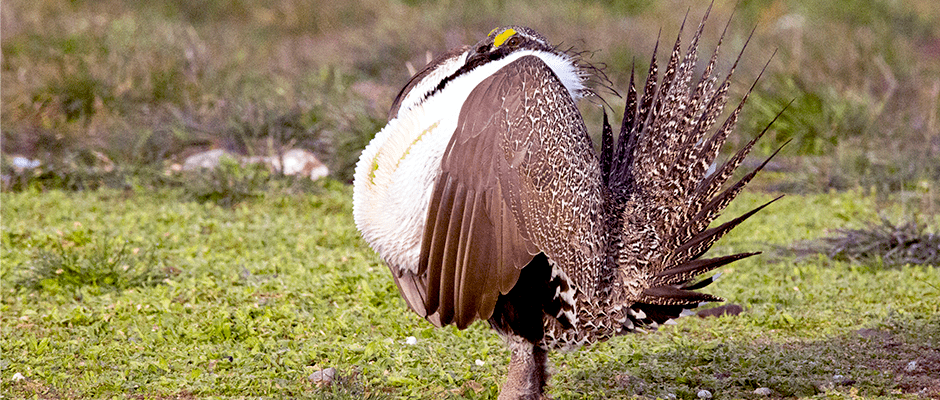Share this article
Sage grouse Conservation Credit System used in Nevada
The State of Nevada has released the first credits for sale under its Conservation Credit System (CCS) to mitigate impacts to sage-grouse habitat. The CCS was developed through a collaborative effort among the State of Nevada, the U.S. Forest Service, the Bureau of Land Management (BLM), U.S. Fish and Wildlife Service (USFWS), scientists, landowners, conservation organizations, and many others.
The Humboldt-Toiyabe National Forest worked closely with the State of Nevada and BLM Nevada to develop protocols for piloting the use of the credit system for mitigation on National Forest System and public lands where project impacts cannot otherwise be adequately mitigated. The CCS standards provide a net conservation gain for sage grouse habitat and create conservation and business certainty for land owners and conservation bankers, industry and infrastructure agencies, and regulators.
Two projects on working ranches generated the 800 credits now available for sale to fulfill mitigation obligations for USFS and BLM permits. In less than 12 months, the projects obtained verified credit scores and approved management plans. Nine additional credit projects are anticipated to produce credits for sale this fall.
The Forest Service is working with the State of Nevada, BLM, and USFWS to explore opportunities to authorize the development of credits on federal lands through habitat enhancement that could be done under a grazing permit or stewardship contract, providing extra incentives for permittees and contractors to do good things for sage-grouse.
This article was originally appeared in the U.S. Forest Service Intermountain Region Newsletter.
Header Image: ©USFS








